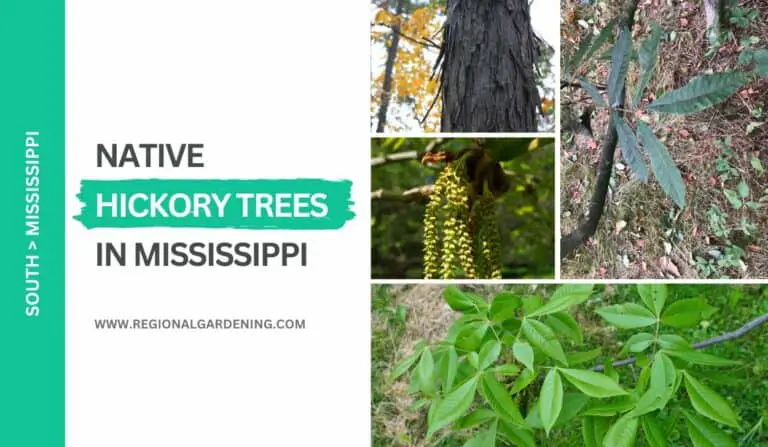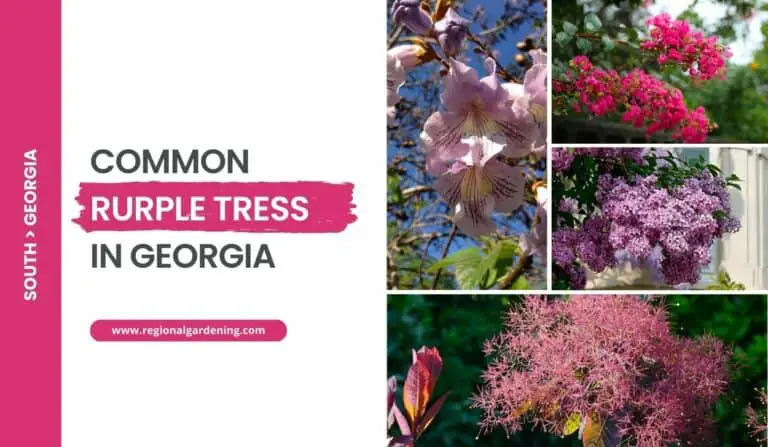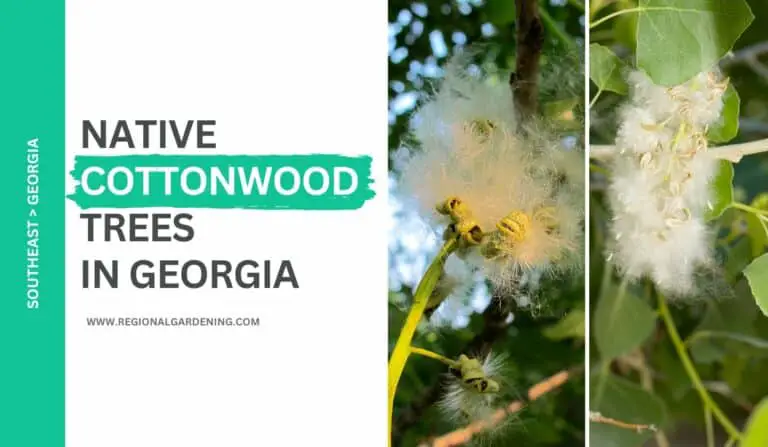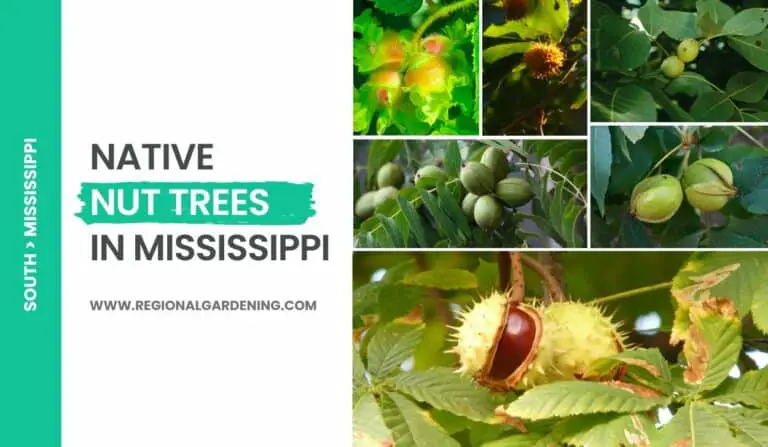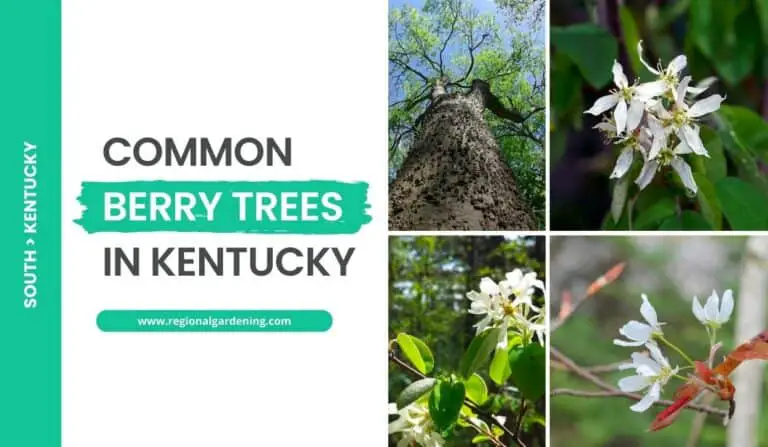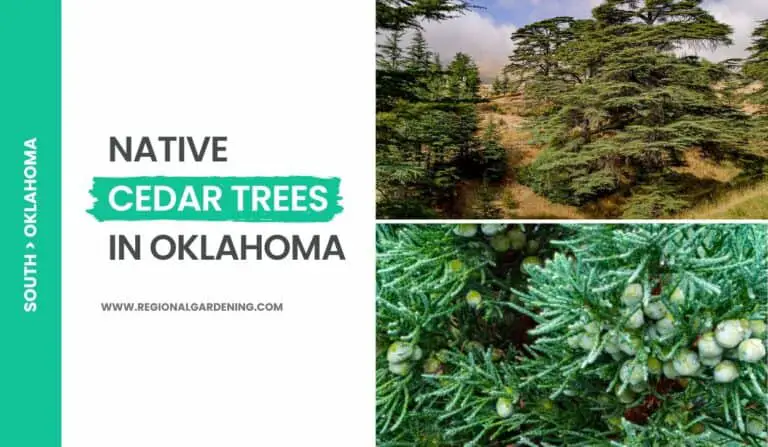4 Native Willow Trees In Georgia (Pictures & Identification)
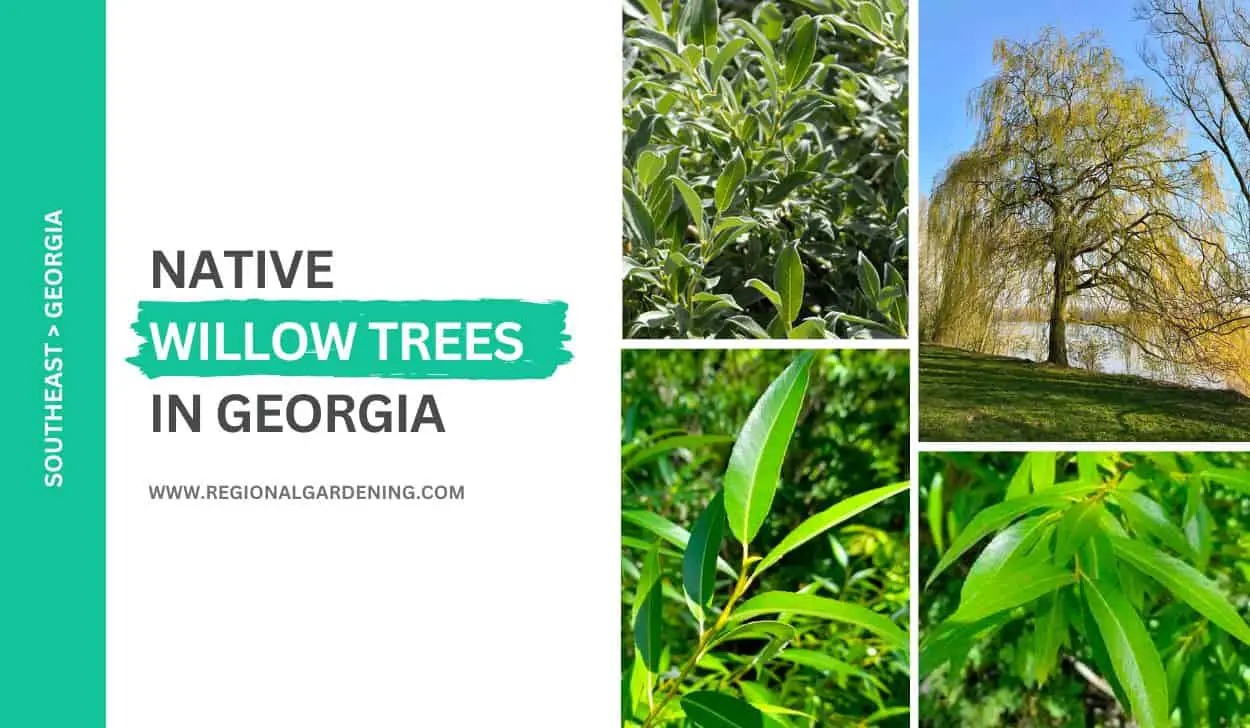
Willow trees are very common in the southeastern United States, including Georgia. And, I’m sure that you’ve seen multiple types of them whenever you go to a park.
But do you know how to tell them apart? Do you know how many of them are native to the state? Well, this article answers all these questions.
I’ll walk you through four native willow trees in Georgia, including identification, native habitat, and range.
So, let’s get started.
1. Coastal Plain Willow
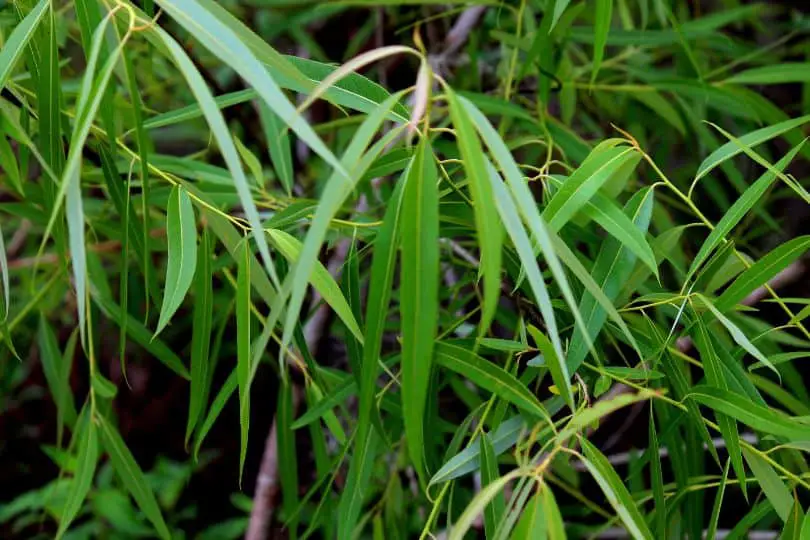
- Common Name: Coastal Plain Willow
- Scientific Name: Salix caroliniana
- Mature Height: About 20 to 40 feet high
- Native/Non-Native: Native to Georgia
- Flowers/Cones: Yellow & green flowers
- Uses: Lumber, furniture, wooden toys, charcoal, etc.
Coastalplain Willow trees are the most commonly seen willow trees in Georgia’s coastal regions.
It is a deciduous tree native to the southeastern United States. It can reach a height of 20-40 feet and a trunk diameter of 1-2 feet. Coastal plain Willow has grayish-brown bark with deep furrows and ridges.
The leaves of coastal Willow are simple, alternating, and lanceolate in shape, measuring 3-6 inches long and 0.5-1 inch wide. The leaves have a bright green upper surface and a pale, hairy lower surface.
Male and female flowers emerge on distinct plants, with male flowers appearing as yellowish catkins and female flowers appearing as greenish or reddish spikes. The fruit is a tiny, cylindrical capsule that contains many seeds.
Coastal plain Willow’s range ranges from eastern Texas to Florida and up to Virginia. It is most typically seen near rivers and streams in the southeastern United States. Coastal plain Willow is a vital component of wetland ecosystems, providing habitat and food for a wide range of wildlife species such as birds, mammals, and insects.
Coastal plain Willow can be found in a variety of wetland habitats, including swamps, marshes, and floodplains. It prefers damp to wet soils high in organic matter, such as sandy loams or clay loams, and can withstand occasional flooding.
2. Black Willow
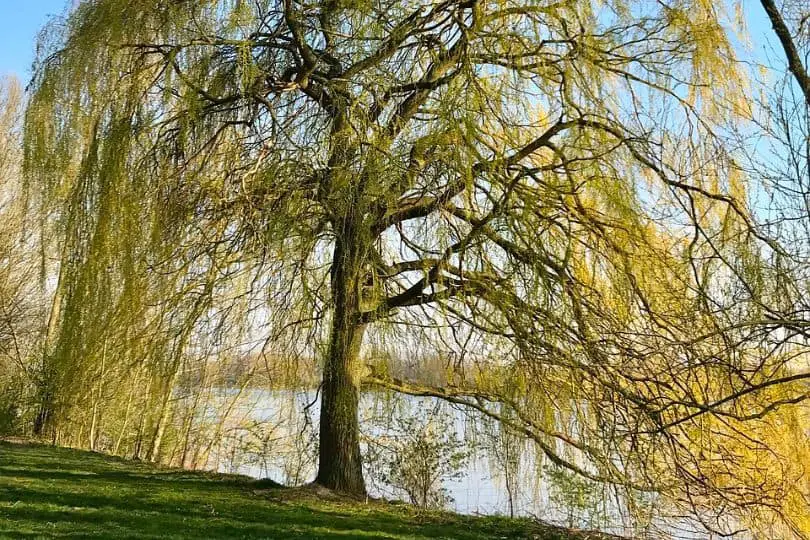
- Common Name: Black Willow
- Scientific Name: Salix nigra Marsh.
- Mature Height: About 30 to 40 feet high
- Native/Non-Native: Native to Georgia
- Flowers/Cones: Small pods about 1/8 inch long
- Uses: Artificial limbs, furniture, cellar and barn floors, toys, charcoal, etc.
Black Willow trees are the most commonly seen willow trees in Georgia. It can reach a height of 30 to 40 feet, and its branches form a large, uneven, open head.
The Black Willow’s leaves are deciduous, which means they fall off during the autumn season. The leaves are tall and slender, tapering with serrated margins, and pale green and glossy on both sides. The tree’s fruit is a small, 1/8-inch-long pod that is pale reddish-brown in color and contains minute seeds with long, silky down.
The bark of the Black Willow ranges in color from light brown to dark brown and almost black. On the surface of older trunks, the bark is deeply divided into broad, flat ridges, scaly, and shaggy.
The wood of the Black Willow is soft, light, and weak, with a thin, nearly white sapwood. There are no warps, checks, or splinters in the wood.
Artificial limbs, furniture, basement and barn floors, toys, and charcoal are just a few of the uses for Black Willow. It is sometimes even turned into timber. This tree species can be found throughout the United States, but it is most common along the coast and near the ocean.
3. Florida Willow
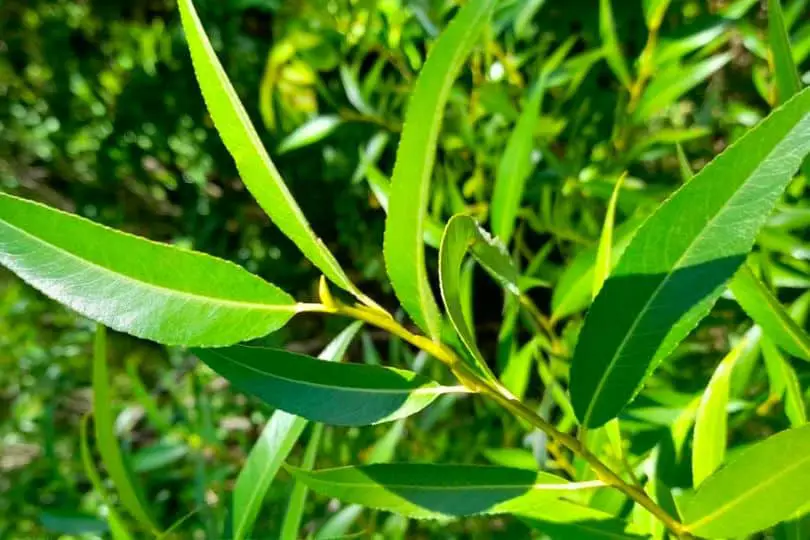
- Common Name: Florida Willow
- Scientific Name: Salix floridana
- Mature Height: About 20 to 40 feet high
- Native/Non-Native: Native to Georgia
- Flowers/Cones: Greenish-yellow flowers
- Uses: Lumber, furniture, wooden toys, charcoal, etc.
The Florida Willow is a small to medium-sized tree found in the southeastern United States. It can reach a height of 20 to 40 feet and a spread of 15 to 25 feet. The Florida Willow’s slender, lance-shaped leaves can grow up to 5 inches long and 1 inch wide. The leaves are a light green color with a smooth texture on top and a slightly hairy underside.
Florida Willow bark is tough and grayish-brown. The tree produces small, inconspicuous greenish-yellow blooms in early spring. The fruit of the Florida Willow is a compact, capsule-like structure that contains several tiny seeds.
The Florida Willow can be found in wetlands, swamps, and along riverbanks throughout the southeastern United States, including Florida, Georgia, Alabama, Mississippi, Louisiana, and Texas. The tree prefers moist soils and can withstand flooding on occasion.
The Florida Willow is an important part of wetland ecosystems, providing habitat and food for a variety of animals including birds, mammals, and insects. The tree also aids in the stabilization and prevention of erosion in marsh soils.
In terms of soil conditions, the Florida Willow prefers moist to wet, slightly acidic soils. It can survive flooding and thrives in sandy or loamy soils. The tree is also resistant to salt spray and can thrive in brackish wetland conditions.
4. Silky Willow
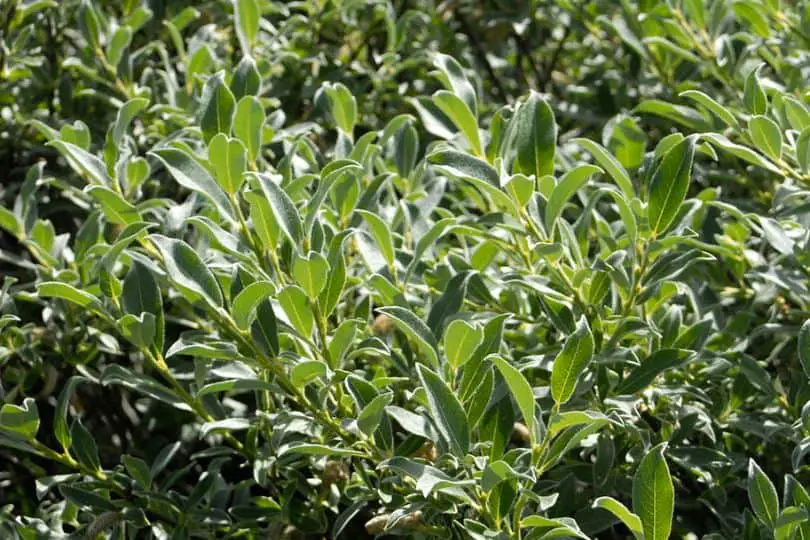
- Common Name: Silky Willow
- Scientific Name: Salix sericea
- Mature Height: About 10-12 feet high
- Native/Non-Native: Native to Georgia
- Flowers/Cones: Small yellowish-green flowers
- Uses: Soil stabilization, lumber, furniture, wooden toys, charcoal, etc.
The Silky Willow, also known as Salix sericea, is a deciduous plant in the Salicaceae family. It is native to North America and can be found throughout most of the United States and Canada.
The Silky Willow grows thick and rounded, reaching heights of 10 feet and widths of 12 feet. The leaves are long and narrow, measuring 2 to 4 inches in length, and covered in fine silky hairs that give them a pleasant and fuzzy feel. The bark is smooth and gray-brown in color, and it can become slightly scaly with age.
Silky Willow thrives in moist to wet soils, such as those found near riverbanks, streams, and marshes. It can also be found in open woodlands and meadows. While it can tolerate a wide range of soil types, it prefers organic matter-rich, slightly acidic soils.
In the spring, the Silky Willow produces small, inconspicuous yellowish-green blooms in bunches along the branches. Then there are thin, slender capsules with numerous tiny seeds that are spread by the breeze.
This plant is extremely adaptable, thriving in conditions ranging from full sun to partial shade. It is also relatively easy to care for and can be propagated through softwood cuttings or seeds. It provides valuable ecosystem services such as soil stabilization, erosion reduction, and wildlife habitat as riparian zones.
Similar Articles
- Native Oak Trees in Georgia
- Native Dogwood Trees In Georgia
- Native Pine Trees In Georgia
- Native Hickory Trees In Georgia
- Native Maple Trees In Georgia
- Native Tupelo Trees In Georgia
- Native Plum Trees In Georgia
- Native Magnolia Trees In Georgia
- Native Ash Trees In Georgia
- Native Elm Trees In Georgia
- Native Cottonwood Trees In Georgia
- Native Cedar Trees In Georgia
- Native Birch Trees In Georgia
- Common Purple Trees In Georgia
- Common Cypress Trees In Georgia
- Common White Flowering Trees In Georgia
Native Willow Trees In Georgia – Sources
The Regional Gardening team makes sure that the information in our articles is accurate by only using sources that are known to be trustworthy. Some of these sources are peer-reviewed journals from government agencies, well-known universities, and scientific research organizations.
- Georgia Native Plant Society
- College Of Agricultural & Environmental Sciences, University Of Georgia
- Native Plants Books, Georgia Native Plant Society
- Georgia Forestry Commission
- Native Plants Of North Georgia, University Of Georgia
- Tree Care, Georgia Tree Council


